
Le Grand Retour
The return of the road trip has elicited a great GT comeback.
If your tastes veer toward the traditional, you like your grand tourers as they did in the early days: engine in the front (most of the time), driven wheels in the back (not exclusively, mind you), two doors and two seats in the middle. Classic, no? But even with this iconic approach to grand touring, there are plenty of variations to the theme.
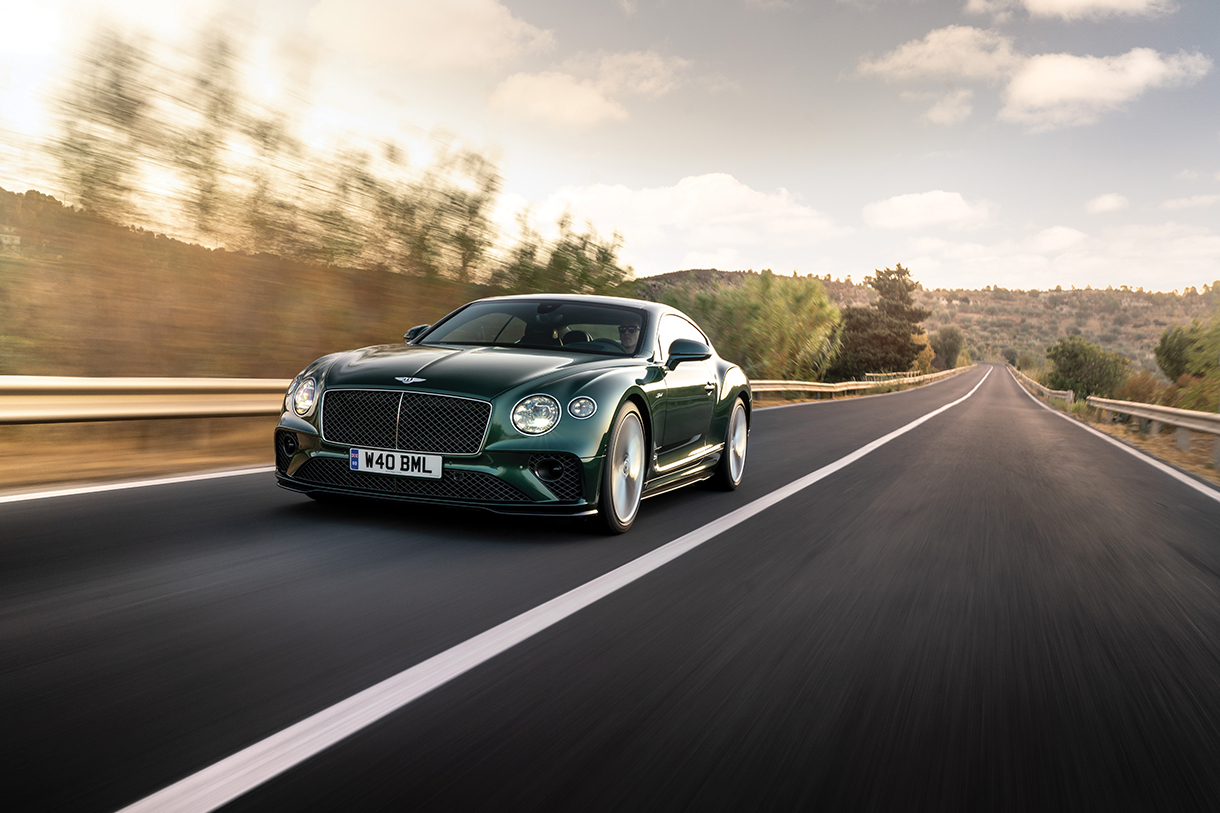
Take, for example, the new Bentley Continental GT Speed, the latest muscle car from the staunchly British marque. Although the brand has committed to electrification in the future, the engine under the hood here is decidedly not electric—it’s a twin-turbo 6.0-liter W12 engine that churns out a prodigious 650 hp.
All that muscle is routed to all four wheels via a dual-clutch 8-speed automatic transmission inspired by motorsports. The all-wheel drive system is calibrated to send more torque to the rear wheels, while the active rear differential and rear-wheel steering help sharpen cornering capabilities, giving the slick GT the skills of a purebred performance car. The run to 60 mph takes a mere 3.5 seconds; top speed rolls in at 208 mph.
But what makes the Continental GT Speed a truly spectacular grand tourer is the way it effortlessly combines mind-bending performance with stratospheric levels of luxury. The passenger cabin provides 2+2 seating and there’s enough space for a pair of smaller motoring enthusiasts in the rear seat. There’s the choice of many different leather hides to cover the interior and the availability of Alcantara inserts for an added measure of sporting satisfaction. The interior can also feature piano black veneer panels, a center console finished in dark aluminum, and diamond seat quilting with the word “Speed” stitched into the headrests.
To finish everything off in fine style, the GT Speed also makes a profound statement when it pulls up to the curb. The dark tinted grilles, unique fender vents, carbon-fiber side skirts, and 22-inch wheels give the big coupe a low, menacing appearance. This is a brooding performance machine, but one that envelops you in rich materials and ultra-high degrees of comfort. $274,900; bentley.com
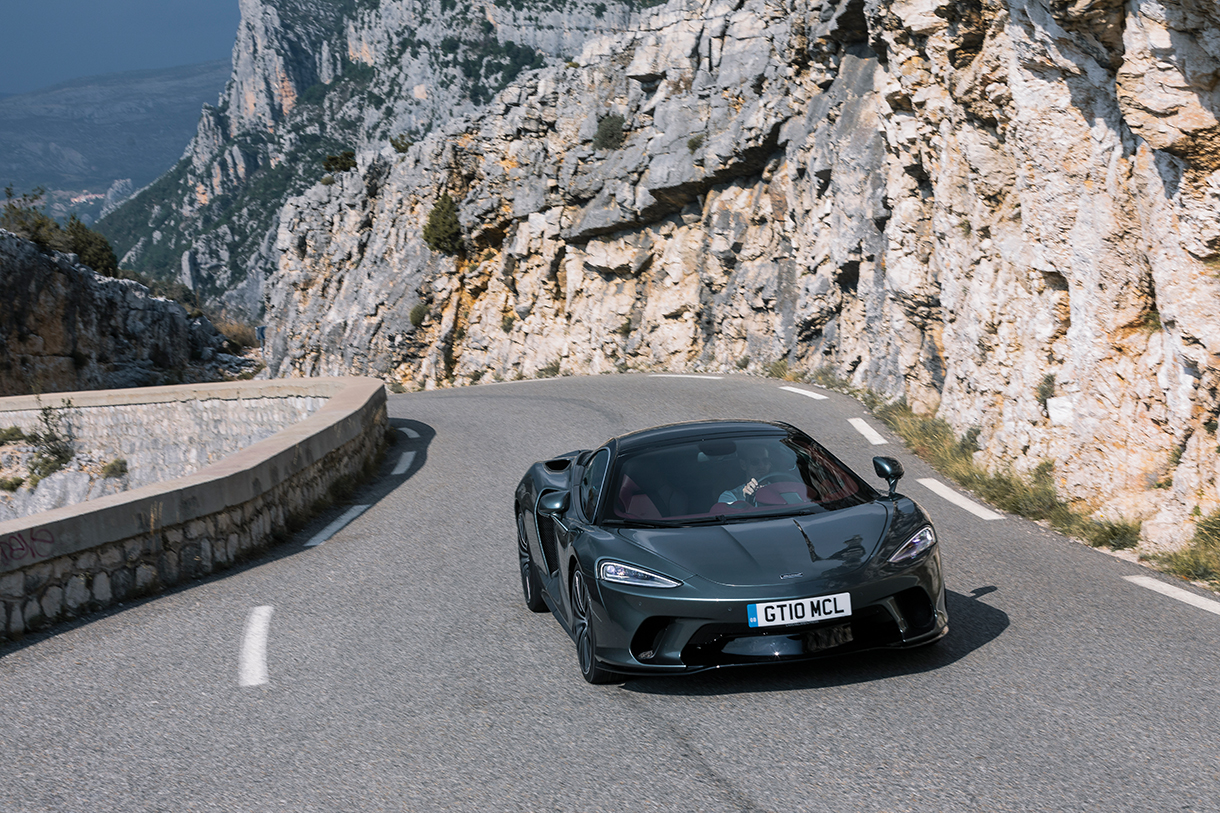
If it seems like McLaren releases a new supercar every few months, well, that’s precisely what they’ve been doing for some time now. But two years ago, the British concern launched the McLaren GT and this authentic grand tourer has continued on largely untouched ever since—with no bumps in performance, no model variations, no replacements on the horizon.
The brief presented to the design and engineering teams must have been relatively straightforward: Capture the essence of a modern McLaren’s performance, then package it in something more suited to longer drives and weekend excursions. Simple enough. Yet the way in which the McLaren GT transforms from lamb into lion is remarkable.
The platform and suspension system on the GT are shared with the McLaren 720S, while the engine is a variation of that supercar’s twin-turbocharged 4.0-liter V8. In this instance, the mid-mounted engine generates 612 hp and, with the added benefit of the launch control system, can send the GT to 60 mph in just 3.1 seconds.
For the record, that’s quick. For added perspective, it’s especially quick for a car that’s intended for more leisurely drives along scenic roads and on unlimited-speed highways. Sure, the GT has track settings for both the powertrain and chassis, but it also has two cargo areas (one under the hood, the other under the rear hatch) with a combined 20.1 cubic feet of space available for golf clubs, weekend bags, you name it.
Tapping into the dual nature of the GT is a relatively easy task. The dials controlling the three powertrain and three chassis modes are situated just below the 7-inch touchscreen. In its most relaxed setting, comfort mode, this McLaren rides softer than any other in the current fleet. The GT has a 7-speed dual-clutch automatic transmission derived from racing, but will shift itself in automatic mode, resolutely at low revs in the name of more relaxed motoring.
All things considered, the McLaren GT is an inspired response to the idea behind the original grand tourers. Sitting in the perfectly contoured and supremely adjustable driver’s seat, it’s easy to imagine powering down to the south of France for the weekend with your favorite co-driver by your side. The only challenge? Keeping your right foot in check and the car’s 203-mph top speed securely off in the distance. $200,000; cars.mclaren.com
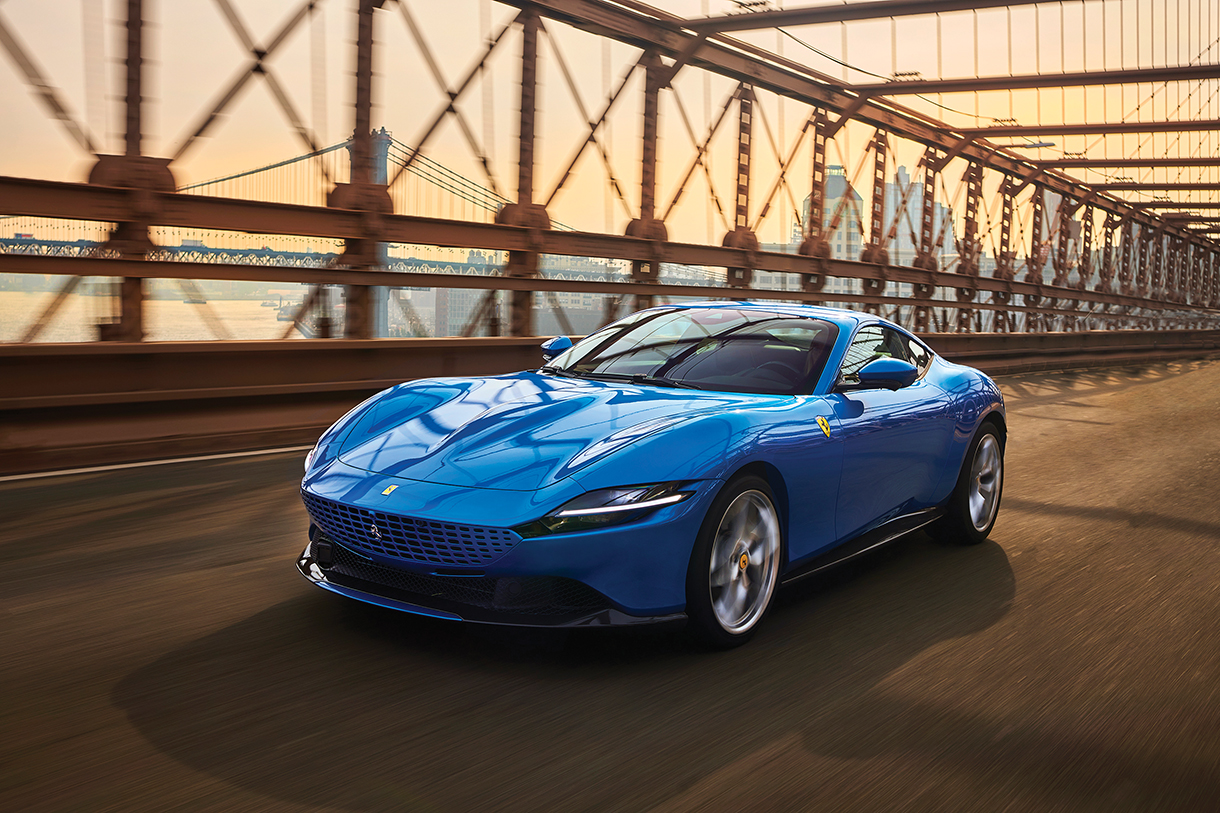
The automotive industry has been wildly volatile of late, so it’s incredibly rewarding to see the Ferrari Roma on our streets. The fact that one of the original GT carmakers is still in a position to offer a modern-day interpretation—and such a compelling one at that—is a wonderful thing. In some corners of the world, enthusiasts are bemoaning the death of the automobile. Here, with the Roma, the brain trust at Ferrari seems to be saying: Not so fast!
Every modern Ferrari is a mechanical masterpiece—this Ferrari is no exception. Power comes courtesy of the brand’s twin-turbocharged 3.9-liter V8, shared with the Portofino M, F8 Tributo, and F8 Spider. The engine offers a tornado of performance: 612 hp for the Roma, a 0–60 mph time of 3.4 seconds, and a top speed of 199 mph.
To be clear, the Roma is not the fastest or most powerful thing bearing the iconic Prancing Horse symbol these days. But who cares? With just one look, the timeless appeal of the Roma descends like an angel: the beautifully proportioned 2+2 shape, the long sloping hood, the subtle grille, the sensuous lines around the rear wheels, and the quietly confident stance.
From the driver’s seat, the Roma is comparable to other cars in the Ferrari lineup: the Formula One–inspired steering wheel, the large shift paddles set immediately behind, the manettino dial used to select the one of five drive modes, the digital instrument panel, the centrally mounted touchscreen display. Everything is engineered to give the driver maximum control over the proceedings. But there’s also the sense that the aesthetic needs of both the driver and co-driver are being met. The Roma features beautiful materials throughout, and the dedicated twin-cockpit design marries technology with sheer elegance and a surprising amount of functionality. The trunk has 12 cubic feet of space, the rear seats offer some additional room, and the options list includes a customized multipiece luggage set.
When it debuted, the Ferrari Roma captured the prestigious Red Dot Award and the jury highlighted the car’s lack of superfluous details and minimalist design. They further reasoned that the Roma captured the essence of la dolce vita as it was in Rome in the 1950s and ’60s—in other words, it’s been mission accomplished for Ferrari. $218,670; ferrari.com
Let’s say you’re the sort of person who likes the idea of a grand tourer, in theory. But you also want to be seen as an early adopter and a free thinker. If so, here are two interesting choices: the Karma GS-6 and the Mercedes-AMG GT 63 S E Performance four-door coupe. But how can a four-door be a GT? Well, this is the point in the story where we move away from the classic definition of “grand tourer” to investigate a generation of vehicles breaking new ground.
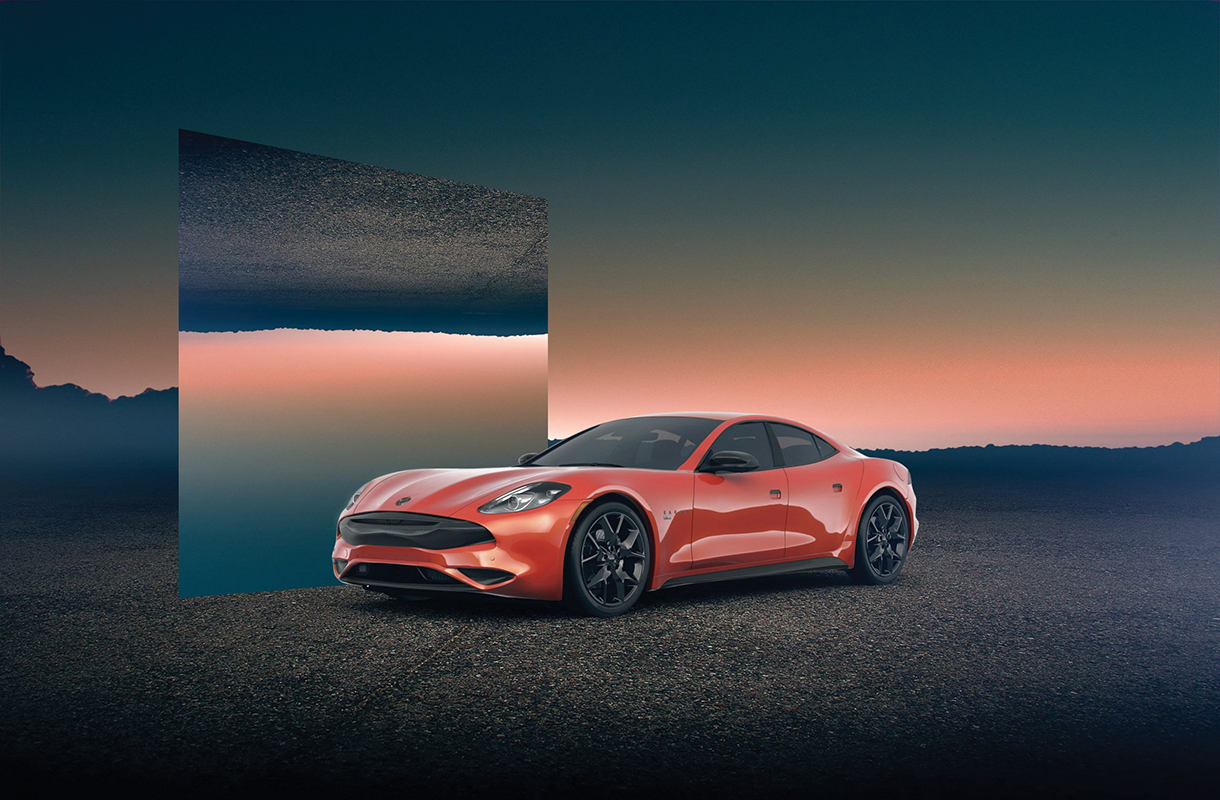
Example: The Karma GS-6, which is a new derivation of the Karma Revero GT, a luxury plug-in hybrid sedan that showcases stunning design and no small amount of performance. Positioned as the resurgent brand’s entry-level model, the GS-6 employs a pair of electric motors that create 536 hp, all sent to the rear wheels.
The 28-kWh battery pack provides enough juice to run in EV mode for some 80 miles before the range-extending gas engine—a turbocharged 1.5-liter 3-cylinder from BMW—kickstarts an onboard generator to supply the electric motors with power. When sport mode is selected, the Karma draws upon both the electric motors and the gas engine for quicker acceleration. The sprint from 0–60 mph takes around 4.5 seconds, and is accompanied by a surprising growl from the small turbocharged engine. The passenger cabin of this eco-chic grand tourer is an aesthetically pleasing space, complete with optional carbon fiber or reclaimed wood accents, leather seating surfaces, ultra-comfortable front seats, and rear seats that can accommodate most adults comfortably. The digital instrument panel is ultra-slick and the 10.2-inch touchscreen follows suit. $83,900; karmaautomotive.com
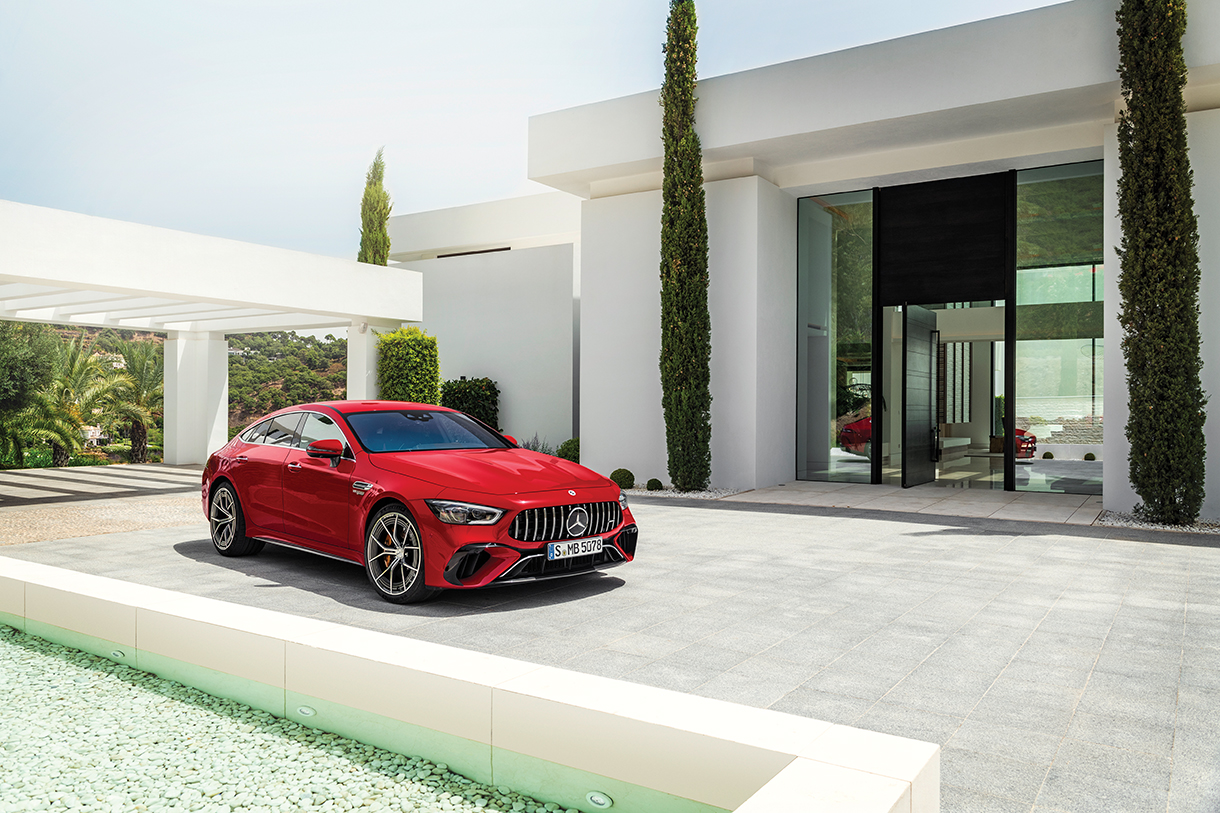
Introduced at the 2021 Munich International Motor Show, the Mercedes-AMG GT 63 S E Performance four-door coupe is the most powerful production Mercedes ever, until the forthcoming AMG One hypercar arrives on the scene.
The secret to this four-door missile is the high-performance plug-in hybrid powertrain. In the front of the car, there’s a twin-turbocharged 4.0-liter V8 engine; at the back, there’s an electric motor that provides supplementary power to the rear wheels alone. The result: a staggering 831 hp combined, a 0–60 mph time of just 2.9 seconds, and a top speed of about 196 mph. (Yikes.)
The 6.1-kWh battery pack in the GT 63 SE Performance is designed to trigger increased performance off the line (see above stats) rather than whisper-quiet motoring; under electric power alone, the car has a range of less than 10 miles. But this four-door coupe also features technology inspired by Formula One: a multistage regenerative braking system, including an extreme setting intended only for track use. Sheer power aside, this GT is also a dynamo when it comes to style and presence. The inherent beauty of the car’s shape is enhanced with a more aggressive front fascia, a charging port in the rear bumper, and an optional 21-inch wheel package.
Inside, the race-inspired theme continues with a flat-bottom steering wheel. The instrument panel and infotainment screen blend into one display and, of course, there are amenities galore, including seamless connectivity and voice-activated controls. Pricing not available at press time; mercedes-benz.com
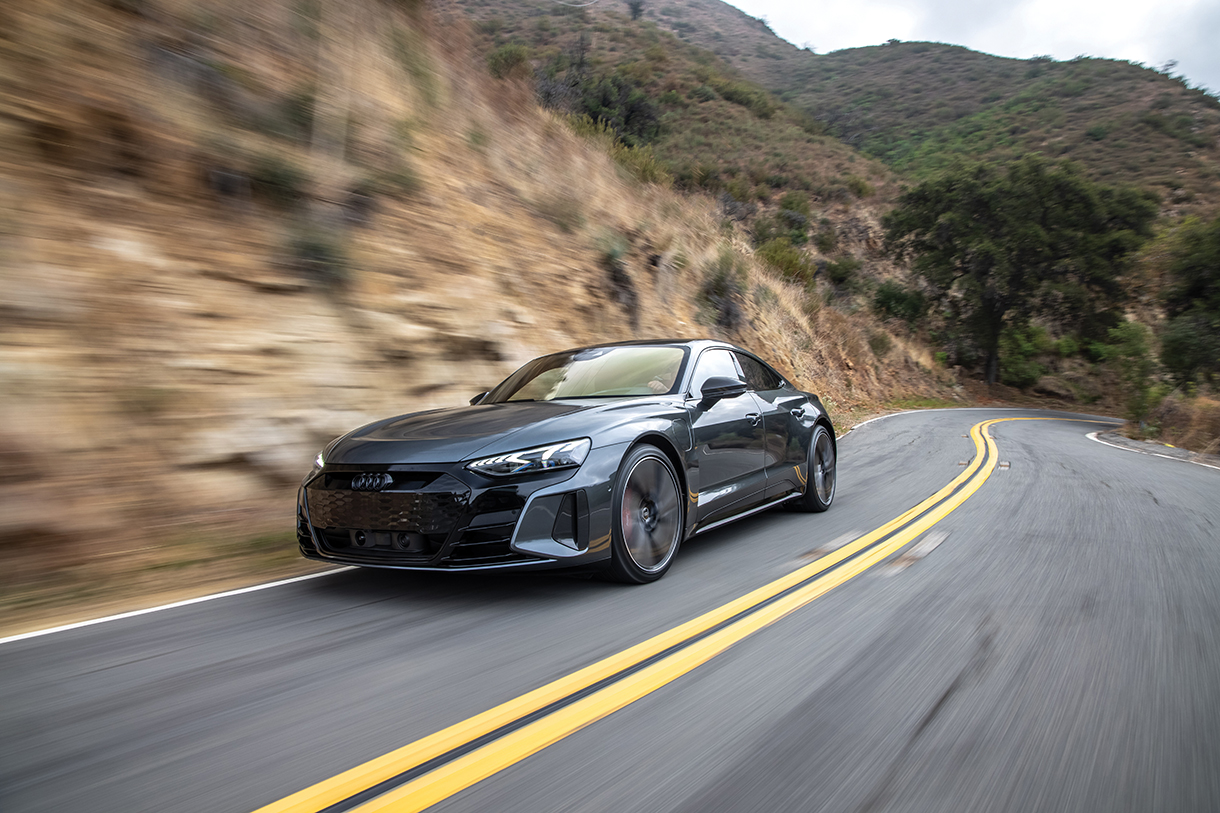
For an even less traditional example of a grand tourer, look no further than the Audi RS e-Tron GT and the Porsche Taycan Turbo S Cross Turismo. This dynamic duo shares some technology and much philosophy, bringing to market the notion of a high-energy four-door GT that emphasizes smooth, silent, long-distance motoring.
There are two versions of the Audi e-Tron GT available: the base model and the RS. Both are built upon the same 800-volt architecture as the Porsche Taycan lineup, an approach to electrified vehicles that is lighter, less prone to overheating, and allows for faster charging.
The e-Tron GT features an 83.7-kWh battery pack and is powered by two electric motors—one is dedicated to driving the front wheels; the other, the rear wheels. This powertrain design gives the Audi true all-wheel drive, a configuration the brand became famous for decades ago in the FIA World Rally Championship.
In the base version, the two motors combine to produce 469 hp (522 hp with boost mode), while the RS e-Tron GT ups the ante to 590 hp (637 hp with boost mode). This level of output, combined with an innovative two-speed rear transmission that’s also shared with the Porsche, gives the Audi super-quick acceleration off the line and effortless cruising at high speeds.
Accelerating from 0–60 mph in the RS e-Tron takes just 3.1 seconds, plenty quick for a supercar, let alone a four-door sedan. Top speed is electronically limited to 155 mph, but would be capable of much more, if left to its own devices. The estimated range for the e-Tron line hovers around the 230-mile mark. While the performance figures for the Audi RS e-Tron are impressive, they only tell part of the story. This electric sedan comes equipped with a regenerative braking system with three driver-selectable modes, operated by paddle shifters behind the steering wheel. The most extreme mode harnesses maximum kinetic energy, replenishing the battery pack and generating a dynamic driving experience. The batteries are mounted in the floor, promoting a low center of gravity and responsive handling; an optional rear-wheel steering system and optional air suspension further support the effort.
Of course, style is part of the equation here as well. The RS e-Tron GT has a low, wide, aggressive stance, not dissimilar in approach to the current Audi R8 supercar. In considering the exterior design, perhaps the most appropriate compliment would be this: The Audi RS e-Tron GT looks like a performance car first, an electric car second. Inside, it’s a story of advanced technology and raised eco-consciousness. The vibrant digital instrument panel features customizable information and a 10.1-inch central touchscreen to control many functions. The standard seats are leather-free Dinamica vegan. Audi e-Tron GT, $99,900; Audi RS e-Tron GT, $139,900; audi.com
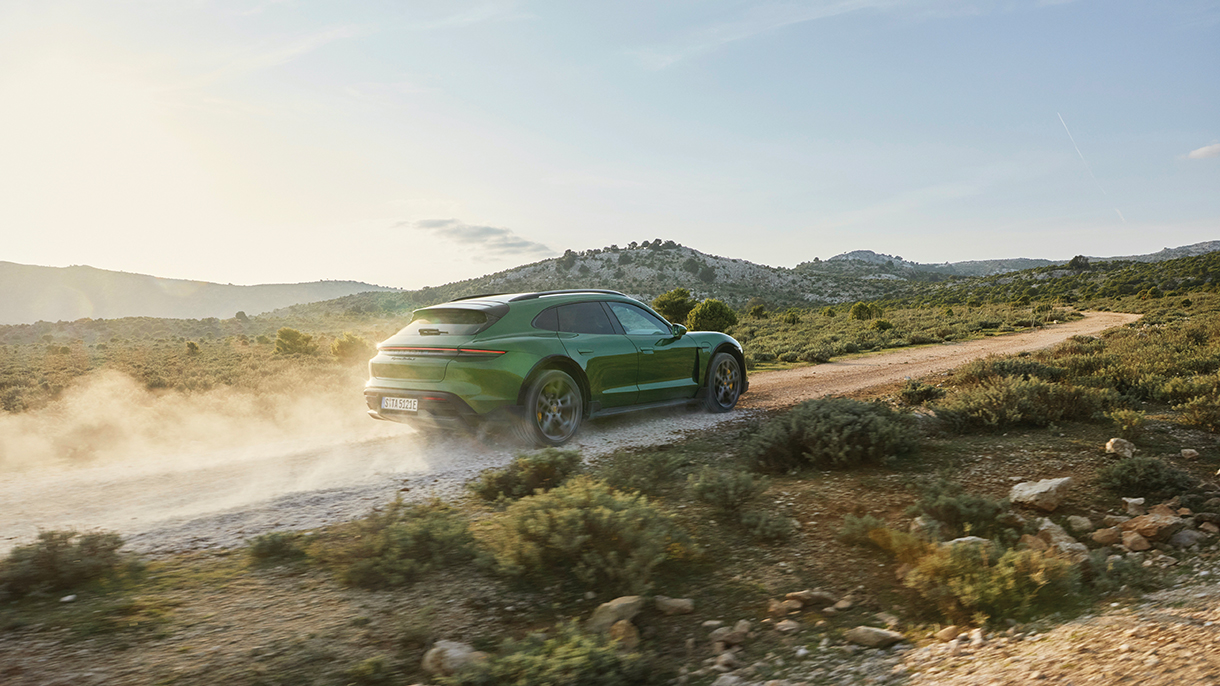
Introduced for the 2021 model year, the Porsche Taycan Cross Turismo is the inspired addition to the wildly successful all-electric line of Taycan vehicles. There are four different versions available, ranging from the base Taycan 4 Cross Turismo all the way up to the Turbo S.
All four versions feature the same 800-volt electric vehicle architecture, 93.4-kWh battery pack, and two-speed rear transmission. The differences among the four come down to the amount of power each version produces and a corresponding impact on range. The 4 Cross Turismo rolls in at 469 hp, while the Turbo S generates a massive 750 hp, good for a sprint time to 60 mph of 2.7 seconds.
The Taycan Cross Turismo is, of course, based on the Taycan sedan. When connected to a fast-charger, the battery pack can zoom from a 5- to 80-percent charge in 22.5 minutes. The estimated range for the Cross Turismo is 227 miles. All the Cross Turismo models come standard with all-wheel drive, higher ground clearance than the Taycan, and an adjustable air suspension system that raises ride height further when the “gravel” drive mode is selected. Speaking of gravel, the Cross Turismo is available with an optional Off-Road Design Package that adds toughness through additional body cladding. Even without this add-on, the Cross Turismo cuts an imposing figure. Compared to the Taycan sedan, the roofline is longer and flatter, providing both front- and rear-seat passengers with more headroom.
There’s increased cargo space as well: a total of 2.9 cubic feet in the front trunk and 42.8 cubic feet in the cabin with the rear seats folded forward. The options list, which includes a roof cargo system and rear-mounted bike rack, extends functionality even more.
Of all the vehicles featured in this rousing round-up, the Taycan Turbo S Cross Turismo is the least traditional GT of all. There are two motors instead of one, four doors instead of two, and up to five seats in total. Looking at the muscular exterior of the Porsche, you might be inclined to call it a shooting brake rather than a grand tourer. But make no mistake: With electric charging stations popping up all over Europe, this high-voltage model would be a great choice for your next road trip on the continent. Taycan 4 Cross Turismo, $92,250; Turbo S Cross Turismo $188,950; porsche.com




